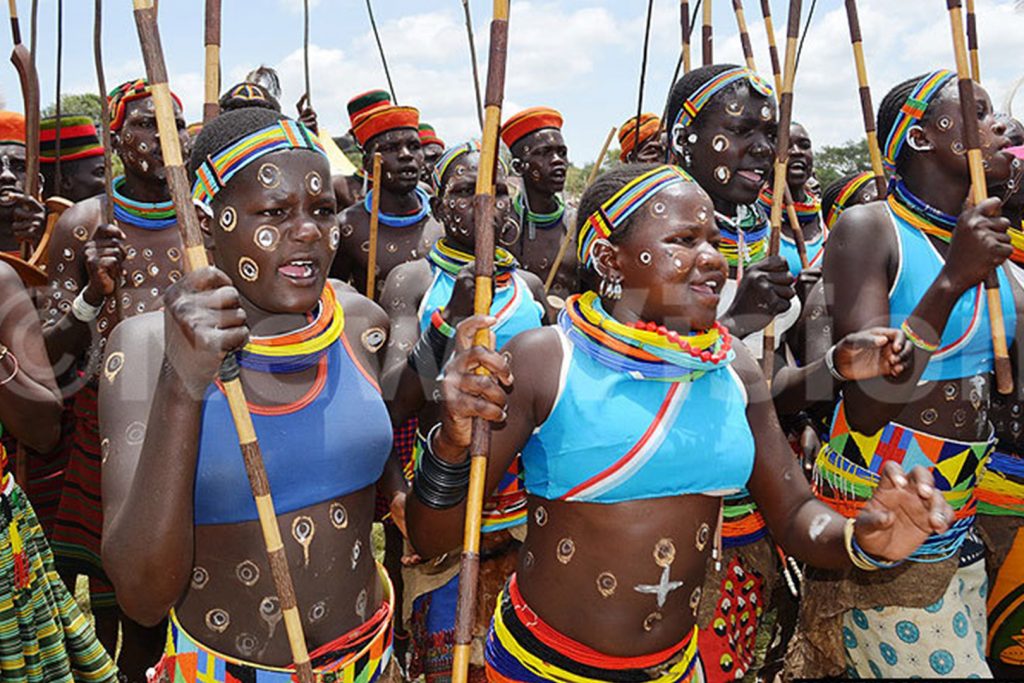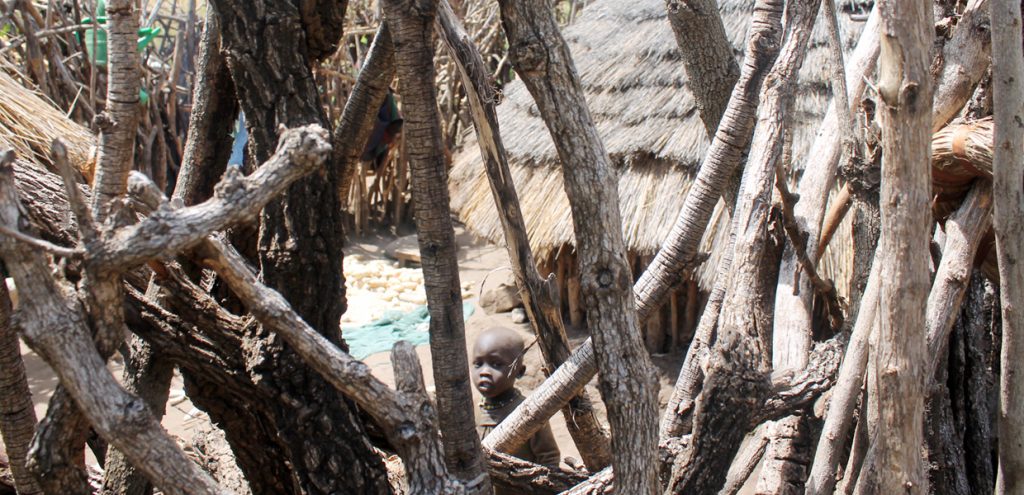The Karamojong Culture is mainly depicted by Karamojong are warriors of Nilotic background and their pride is their cattle and in the past cattle raids were the rule of the day. Their language has Nilo-Saharan Kalenjin roots which is the common family of languages for pastoralists in South Sudan, Kenya and Uganda. The Karamojong migrated to this region of Uganda around 1600 from Ethiopia and settled near Mount Moroto. The name Karamojong means “the old tired men who stayed behind.” BOOK NOW

Enjoy great Karamojong cultural experience
Kidepo Valley National Park is truly rich and blessed in quite a number of attraction, here we look at the Karamojong culture with the Karamojong people who do live just outside the park premises but has formed a living group that has played a great role in tourism to display the Karamojong culture just like the Masai in Kenya who have featured in several magazine. Unlike the rest of Uganda where most of the people have adopted a foreign religion either Christianity or Islam, the Karamojong still follow their traditional religion and believe in a god –Akuj.
They do belief in Akuj as their god, whom they belief in as the source to the cattle. They belief that all the cattle belongs to them, that’s why their used to be an endless tribe wars of cattle rustling due to high supply of guns during the Amin’s regime. The government later had to remove guns away from them so as to create peace in the region.
Kidepo Valley National Park is rarely visited, but the visit is worth speculation, the tune of the environment with the savannah vegetation has favored living of quite a number of birds and wildlife, rated among Africa’s finest wildernesses and is indeed a sight to reckon.
The notorious, cattle-herding Karamojong occupy northeastern Uganda, in an area covering one tenth of the country of Uganda. Discover the unique culture of this remote tribe with the Lorukul Cultural Group, located just outside Kidepo Valley National Park. The amazing community encounter gives a deep grip of how the native K’jongs used to live through different cultural ways such as village walks, group dance, farm visit, and associating with them.
Here you will meet the Karamojong’s, a proud and fierce group of semi nomadic pastoralists with a rich cultural heritage and still practicing their old traditional life style. This will give the original look of a true African person.
Their main livelihood is herding livestock which is their major source of income food and cultural importance such as for payment of bride price, used for performing cultural rituals etc., and the social and cultural importance will be explained as you walk with the guides to the traditional Karamojong manyattas (homesteads), granaries and cattle enclosures. Learn how the villagers make their distinctive beads, sample the local cuisine, and even meet the Karamojong King, who will narrate the tribe’s folklore and beliefs.
The Karamojong consider cattle royalty and it is the measure of a man. A man is valued according to how many cattle he has in his kraal. These people live for their cattle. They will do everything they possibly can to find good pasture and water for their cattle which is a difficult task considering the fact that the Karamoja region of Uganda is a very dry region. They will migrate from place to place in search of the pasture as they do zero farming method. They get milk, blood and mix with dung as source of food. The Karamajong do not cultivate in large acres, they just do some small farming for home stead supplement, and they only depend on their herds as source of their income and food.
Family Roles in Karamojong Culture.
Family roles among the Karamojong’s are quite simple and well defined. Men are responsible for the entire care and grazing of the cattle, day and night, men will sleep near their kraal in guard of their cattle. Even young boys are train at a young age about the responsibility of herding and safe guarding the herds so as to be groomed into a strong community warrior, the women stay back in the Manyatta to take care of the homestead and the children and both women and children tend the gardens to supplement their diet.

A young boy looking through the fence of a Karamojong’s Manyatta
Young boys care for small animals, adolescent boys care for larger animals, and the young men are responsible for the large herds as well as the protection of the community. Young men are expected to prove their worth by committing acts of bravery. In the past this might entail killing a large animal in a hunt, such as a rhino, elephant, leopard or lion.
Karamojong live in a big large extended family, and family ties is highly noted, as life among them is communal. The herds belong to the family.
Things are done together and for the good of the entire community not just a nuclear family or an individual. In the Karamojong culture Men can take as many wives as they want to as long as they have the dowry to pay for them. It is one of those societies where dowry is still taken very seriously. Marriage however among Karamojong is very expensive as herds of cattle are taken in return as dowry. Most hunting is performed by young boys, but a group of Tepeth men at one of the large arigan explained that they also hunt in order to survive the hungry periods.
In addition, pre-pubescent and teenage girls bear the primary responsibility for carrying food back and forth between manyattas and kraals, and may stay in the kraals for anywhere from a few days to several months at a time. The girls take blood from the kraal to their family back in the manyatta, and carry any items from the harvest, food purchased in town and/or relief items to the kraals. Young girls also make the trips from kraals to the towns in order to sell firewood and charcoal and buy food. One of the main livelihood activities for Bokora and Matheniko women and older girls is the collection and sale of firewood and charcoal. Charcoal is more commonly made in areas that are close to towns than in more outlying areas. Men often take the lead in burning charcoal, but it is the job of women and girls to carry charcoal into town for sale.
Just as young girls build miniature huts, boys of a similar age begin to construct small-scale barriers as practice for their adult roles of building and maintaining the enclosures around the manyattas and kraals. Young boys acquire a high degree of responsibility at a very early age through shepherding goats, a duty which begins at roughly four or five years of age. The young boys keep their herds close to settlements. Responsibilities increase as boys grow older, and boys graduate from shepherding goats on to calves and eventually to cattle.
Male youth are primarily responsible for livestock care and for the security of settlements.
The government has however played a great role in trying to sensitize the Karamojong so as to catch up with development. Before they used to just walk naked.
There used to be a saying that” Uganda will never wait for the Karamojong to develop” which used to be a strong myth to describe how backward the Karamojong were. This backwardness however has become a top tourism attraction in line with cultural tourism.
The fee for this tour has contributed to the construction of a clinic and the training of midwives – essential facilities in this isolated region.
Your visit to this region, will greatly contribute towards the health of this community.
BOOK NOW
